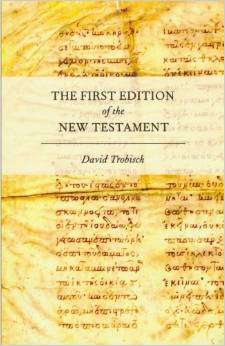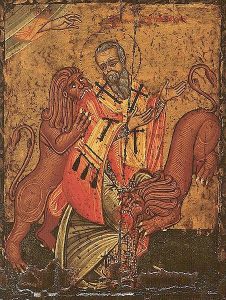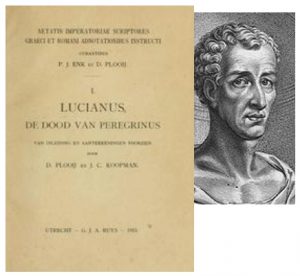 The Synoptic Gospels (Matthew, Mark and Luke) and the Gospel of John contradict each other on the date of the crucifixion of Jesus. The Synoptics tell us Jesus ate the Passover sacrificial meal with his disciples the evening before he died; the Gospel of John that Jesus was crucified at the same time of the Passover sacrifice. In the Gospel of John there is no description of a ritual meal — “take, eat, this is my body, etc” — on the eve of Jesus’ arrest.
The Synoptic Gospels (Matthew, Mark and Luke) and the Gospel of John contradict each other on the date of the crucifixion of Jesus. The Synoptics tell us Jesus ate the Passover sacrificial meal with his disciples the evening before he died; the Gospel of John that Jesus was crucified at the same time of the Passover sacrifice. In the Gospel of John there is no description of a ritual meal — “take, eat, this is my body, etc” — on the eve of Jesus’ arrest.
Whoever was responsible for collecting those gospels with such a blatant contradiction and placing them side by side in a holy canon? What on earth were they thinking?
David Trobisch in The First Edition of the New Testament offers an intriguing explanation. His explanation is in fact only one small point in a small volume that raises several major new ways of understanding the evidence for the origins of the New Testament canon. The back cover blurb sums it up:
The First Edition of the New Testament is a groundbreaking book that argues that the New Testament is not the product of a centuries-long process of development. Its history, David Trobisch finds, is the history of a book — an all Greek Christian bible — published as early as the second century C.E. and intended by its editors to be read as a whole. Trobisch claims that this bible achieved wide circulation and formed the basis of all surviving manuscripts of the New Testament.
In the first part of his book Trobisch argues that certain characteristics of the surviving manuscript trail are best explained if they all originated from a carefully edited collection. That is, from a canonical New Testament very similar to the New Testament with which we are familiar today. The traditional understanding has been that the New Testament canon was a relatively late development and many of the surviving manuscripts originated solo long before the various works were collated into the NT. Trobisch points to features in common across most of these manuscripts that indicate otherwise —
-

English: Folio 115 recto of the codex with the beginning of the Gospel of John (Photo credit: Wikipedia) the common use of the nomina sacra,
- the adaptation for a codex form of publication,
- the uniform order and number of writings in the manuscript tradition;
- the common formulation of the titles,
- and the evidence that the collection was known as the “New Testament” from the beginning.
The second part of his book is another fascinating exploration, this time of the “editorial concept” of the New Testament. Trobisch alerts us to many features many of us who have grown up with the New Testament know all too well but have tended to take for granted. I am thinking of those many little cross-references and “coincidental” positions of the books in relation to one another. The NT is collated like a little code book in some ways. There is just enough information placed strategically to allow us to discern a real historic unity behind all of the books and to see who has written what and what the historical relationship of each of the authors was with one another. (I’m talking about a naive popular reading of the NT.) So towards the end of 2 Peter and 2 Timothy we find Peter and Paul writing in ways that lead us to think all their earlier differences (e.g. in Galatians) were patched over and they ended up as spiritually affectionate brothers. There are enough references here and there to Mark to alert us to identifying the apparent author of the second gospel as the companion of Peter. Similarly Luke is given enough “incidental” references for us to identify him as a beloved physician and companion of Paul and author of Luke-Acts. In a codex form it would have been a thrill to explore back and forth to see how all of the works do relate to one another, how their authors’ histories with one another can be discerned, and above all, how all the various ideas and teachings were really from the one spirit and pointed to real underlying harmony in the church from its beginnings.
As we have seen, Trobisch believes the best explanation for the details of the manuscript evidence is that the New Testament as we know it was collated much earlier than generally thought. He places around the middle/latter half of the second century.
Now we come to our little detail of the contradiction over the date of the crucifixion.


